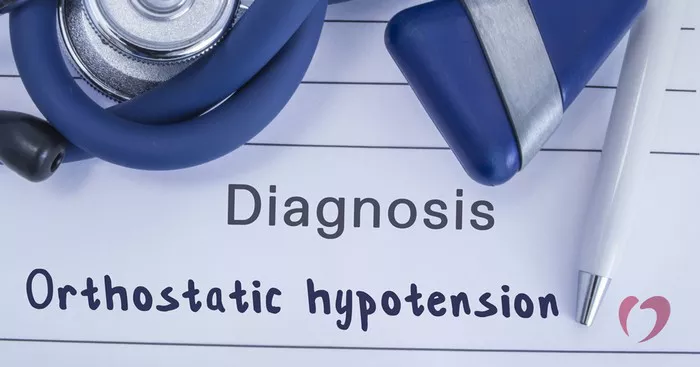Orthostatic hypotension (OH) is a common medical condition characterized by a drop in blood pressure upon standing up from a sitting or lying position. While this phenomenon might seem benign at first glance, it can lead to various complications and significantly impact an individual’s quality of life. In this article, we delve into the intricacies of orthostatic hypotension, exploring its definition, causes, symptoms, diagnosis, treatment options, and management strategies.
Definition and Mechanisms
Orthostatic hypotension, often referred to simply as orthostasis, is defined as a decrease in systolic blood pressure of at least 20 mm Hg or a decrease in diastolic blood pressure of at least 10 mm Hg within three minutes of standing up from a previous sitting or lying position. This condition occurs due to an inadequate physiological response to postural changes, leading to decreased cerebral perfusion and symptoms such as dizziness, lightheadedness, and syncope (fainting).
The mechanisms underlying orthostatic hypotension involve complex interactions between various physiological systems, including the cardiovascular, autonomic nervous, and endocrine systems. Normally, upon standing, the body activates mechanisms to maintain blood pressure and cerebral perfusion through vasoconstriction, increased heart rate, and redistribution of blood flow. However, in individuals with orthostatic hypotension, these compensatory mechanisms fail to function properly, resulting in a rapid drop in blood pressure.
Causes of Orthostatic Hypotension
Orthostatic hypotension can be classified into primary and secondary forms, each with distinct underlying causes.
1. Primary Orthostatic Hypotension: Also known as neurogenic orthostatic hypotension, this form occurs without any underlying medical condition. It typically manifests due to dysfunction in the autonomic nervous system, which regulates involuntary bodily functions such as heart rate, blood pressure, and digestion. Aging is a common risk factor for primary orthostatic hypotension, as autonomic function tends to decline with age.
2. Secondary Orthostatic Hypotension: In contrast, secondary orthostatic hypotension results from underlying medical conditions or medications that disrupt normal physiological mechanisms. Common causes include:
- Neurological Disorders: Conditions such as Parkinson’s disease, multiple system atrophy, and pure autonomic failure can affect autonomic nervous system function, leading to orthostatic hypotension.
- Cardiovascular Disorders: Heart conditions such as heart failure, arrhythmias, and heart valve disorders can impair the heart’s ability to maintain adequate blood pressure upon standing.
- Dehydration: Insufficient fluid intake, excessive fluid loss (e.g., due to vomiting, diarrhea), or conditions such as diabetes insipidus can lead to dehydration, predisposing individuals to orthostatic hypotension.
- Medications: Certain medications, including alpha-blockers, beta-blockers, diuretics, and antidepressants, can lower blood pressure or interfere with autonomic function, contributing to orthostatic hypotension.
- Endocrine Disorders: Disorders such as adrenal insufficiency, hypothyroidism, and diabetes mellitus can disrupt hormonal regulation of blood pressure, potentially causing orthostatic hypotension.
Identifying the underlying cause of orthostatic hypotension is crucial for determining appropriate treatment and management strategies.
Symptoms and Clinical Presentation
The symptoms of orthostatic hypotension can vary in severity and duration, depending on the underlying cause and individual factors. Common symptoms include:
- Dizziness or Lightheadedness: A sensation of feeling faint or woozy upon standing up.
- Syncope (Fainting): In severe cases, a sudden loss of consciousness may occur.
- Blurred Vision: Visual disturbances, such as seeing spots or experiencing temporary vision loss.
- Weakness or Fatigue: Feeling weak, tired, or physically drained, particularly after standing for prolonged periods.
- Headache: Some individuals may experience headaches, often described as a throbbing or pounding sensation.
- Chest Pain: Chest discomfort or pressure may occur in some cases, especially in individuals with underlying heart conditions.
It’s important to note that symptoms of orthostatic hypotension may worsen under certain circumstances, such as after eating a large meal, consuming alcohol, or standing for extended periods without moving.
Diagnosis
Diagnosing orthostatic hypotension typically involves a comprehensive medical evaluation, including:
1. Medical History: A detailed history of symptoms, medical conditions, medications, and lifestyle factors is essential for identifying potential risk factors and underlying causes.
2. Physical Examination: Vital signs, including blood pressure and heart rate, are measured in various positions (lying, sitting, and standing) to assess for orthostatic changes.
3. Orthostatic Challenge Test: This test involves measuring blood pressure and heart rate while the individual transitions from a supine (lying down) to a standing position. A drop in blood pressure meeting diagnostic criteria confirms orthostatic hypotension.
4. Laboratory Tests: Blood tests may be performed to evaluate electrolyte levels, kidney function, thyroid function, and other factors that could contribute to orthostatic hypotension.
5. Additional Investigations: Depending on the suspected underlying cause, additional tests such as electrocardiography (ECG), echocardiography, tilt-table testing, or autonomic function tests may be recommended.
Treatment and Management
The management of orthostatic hypotension aims to alleviate symptoms, prevent complications, and address underlying causes whenever possible. Treatment strategies may include:
1. Lifestyle Modifications: Encouraging adequate hydration, avoiding prolonged standing or sudden postural changes, and wearing compression stockings can help minimize orthostatic symptoms.
2. Medications: Depending on the underlying cause and symptom severity, medications may be prescribed to manage orthostatic hypotension. These may include fludrocortisone (a mineralocorticoid), midodrine (a vasoconstrictor), or medications to address specific contributing factors (e.g., thyroid hormone replacement for hypothyroidism).
3. Physical Counterpressure Maneuvers: Techniques such as leg crossing, squatting, or tensing leg muscles before standing up can help counteract orthostatic hypotension by promoting venous return and increasing peripheral vascular resistance.
4. Dietary Changes: Consuming smaller, more frequent meals and avoiding large carbohydrate-rich meals can help prevent postprandial hypotension (a drop in blood pressure after eating).
5. Orthostatic Training: Gradual exposure to upright postures under supervision may help improve tolerance to orthostatic stress and reduce symptoms over time.
Conclusion
Orthostatic hypotension is a common yet often underrecognized medical condition that can significantly impact an individual’s daily functioning and quality of life. By understanding its definition, mechanisms, causes, symptoms, diagnosis, and treatment options, healthcare professionals can effectively manage orthostatic hypotension and improve outcomes for affected individuals. Through a multidisciplinary approach involving lifestyle modifications, medication management, and targeted interventions, the burden of orthostatic hypotension can be mitigated, enhancing overall patient well-being and functionality.


